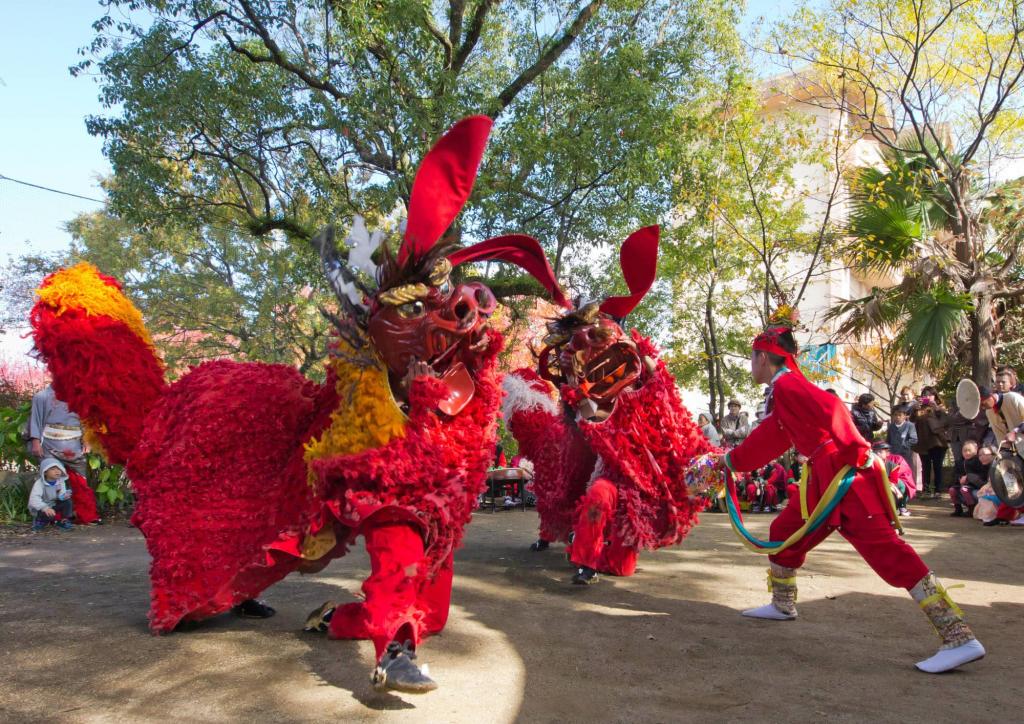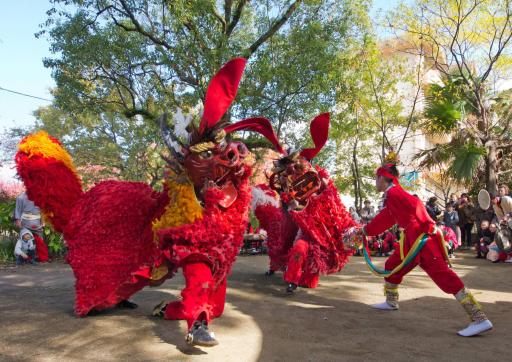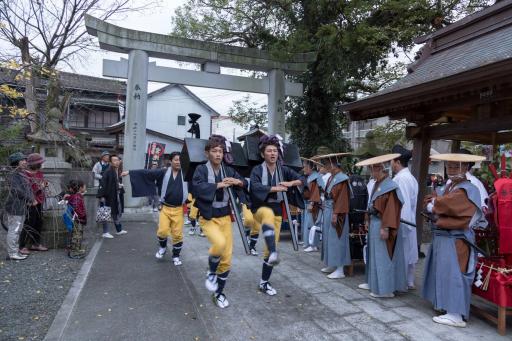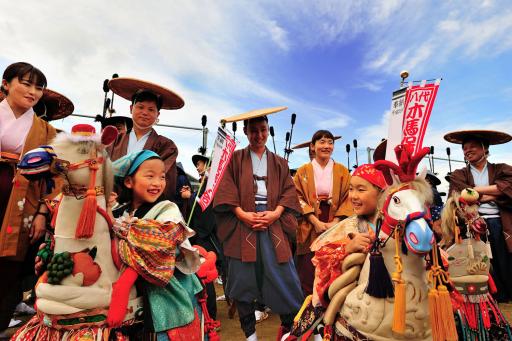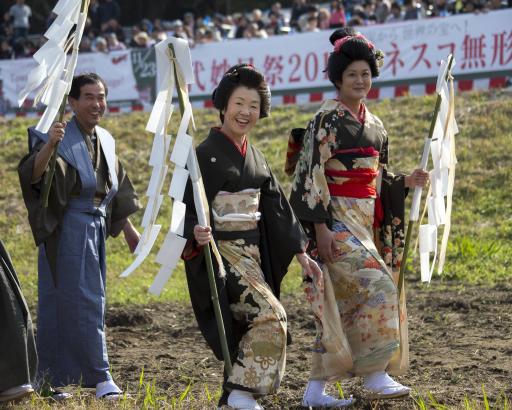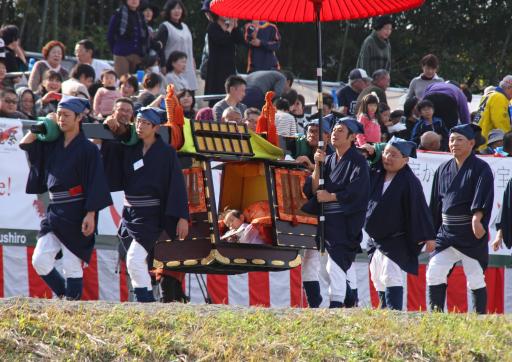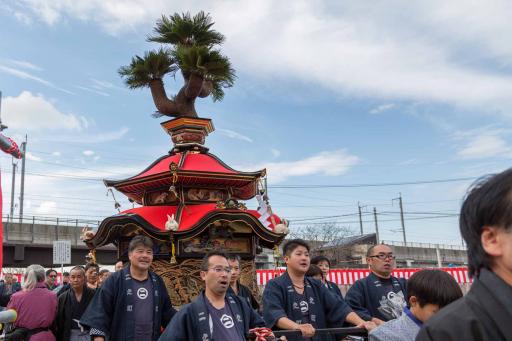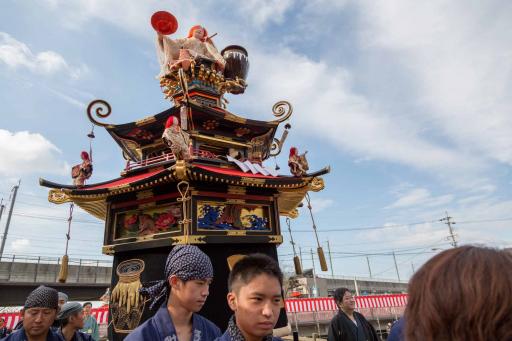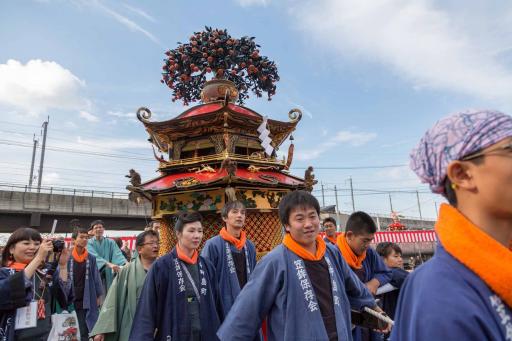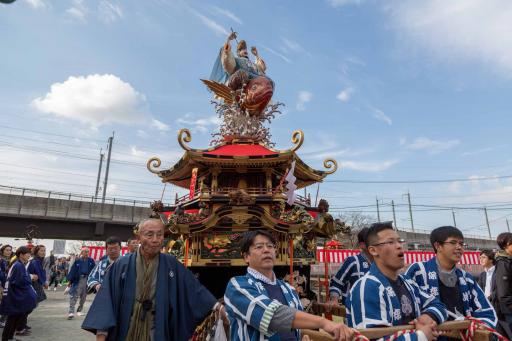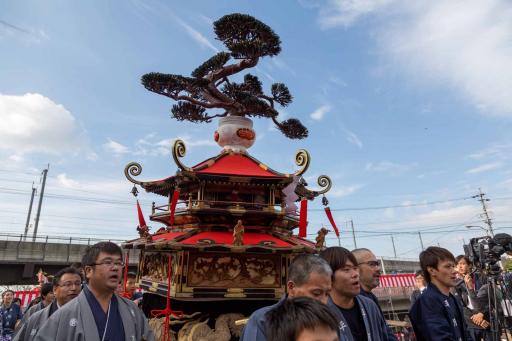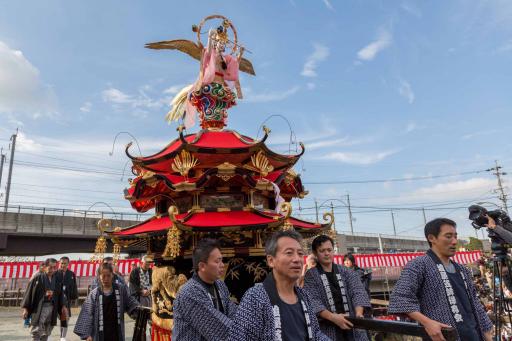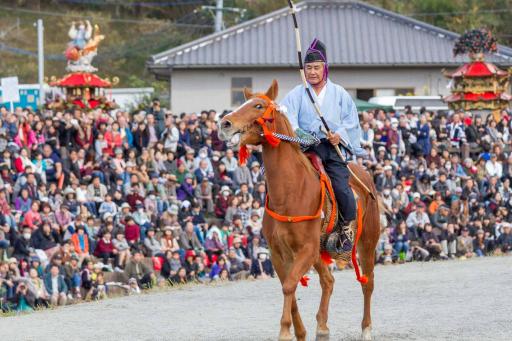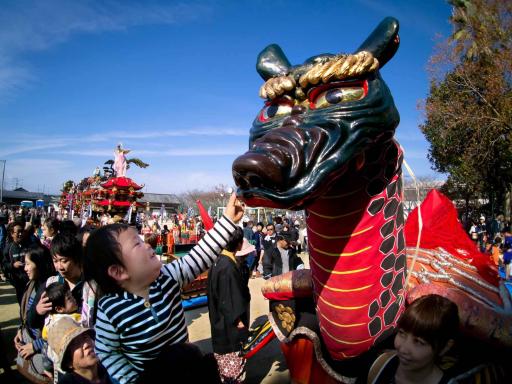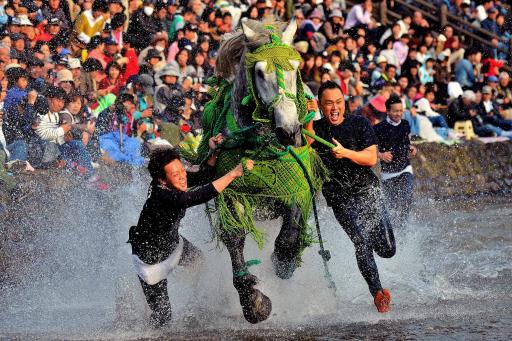1Shishi (Lion)
One of the features of the shishi, or lion, at the Yatsushiro Myōken Festival is the use of Chinese-style costumes and musical instruments. The lion had its start around 1691 when Kanshichi Izakuraya, a merchant in the castle town of Yatsushiro, conveyed what he had learned of the lions at the Nagasaki Suwa Shrine festival (Nagasaki Kunchi) and introduced this to the Yatsushiro Myōken Festival as Nakashima-machi’s lion with added decorations.
A red and white ojishi (male lion) with two horns and a red and yellow mejishi (female lion) with one horn are paired off. Inside one lion are two people, one responsible for the head and front legs and the other working the tail and hind legs. This breathtaking movement is, quite simply, a divine skill.
Together with a child in the role of shaking a ball, the lions put on expressive performances to charamela (street vendors’ flutes), horns, gongs, hand bells, and taiko drums.
When a lion bites the head of a child, it is said that the child will grow up healthy, so many people gather around the lion, a talisman for good luck.
